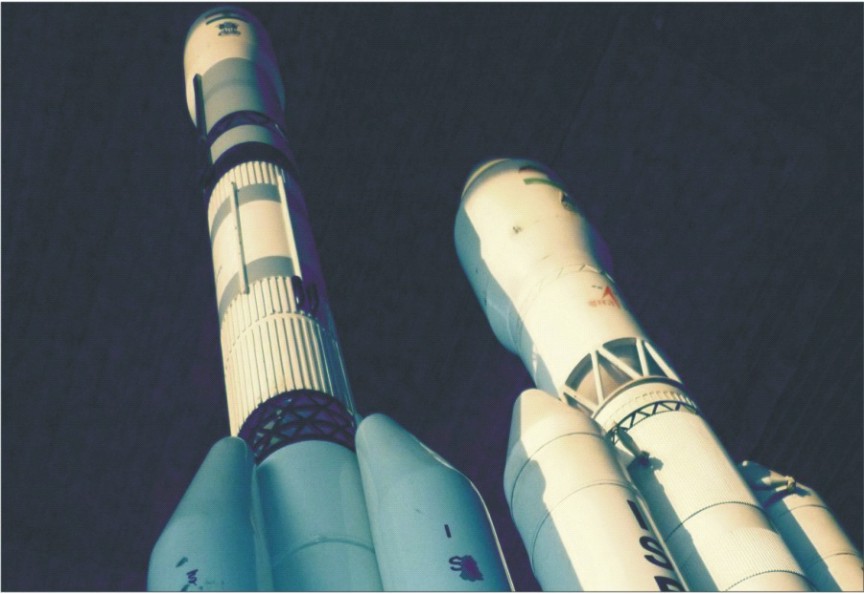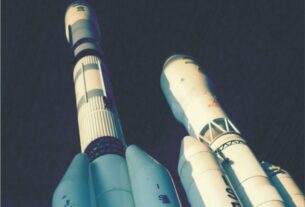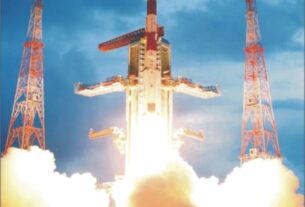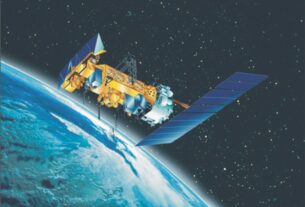Slow pitch
For, way back in 1963 when India took her first step into space with the setting up of the Thumba Equatorial Rocket Launching Station (TERLS) in the fishing hamlet of Thumba on the outskirts of Thiruvananthapuram, the capital of the South Indian state of Kerala, US made available Nike Apache sounding rockets to help the Indian Space Research Organisation (ISRO) carry out experiments in atmospheric science, astronomy and meteorology.
It was around TERLS that the highly successful Indian space programme had its genesis and growth.
In early 1960s, a team of Indian space researchers including former Indian President and well known space and defence scientist, Dr A P J Abdul Kalam, credited with laying the foundations of India’s civilian launch vehicle development program, was provided training in the area of sounding rockets at Wallops island facility of National Aeronautics and Space Administration (NASA).
Dr Kalam on his part has mooted a strong Indo-US partnership to develop Solar Power Satellite (SPS) and mining the moon and asteroids.
Dr Kalam has also visualized an Indo-US research team setting up a habitat on Mars by the middle of this century. Going ahead, Dr Kalam has spearheaded an initiative in association with Washington based National Space Society (NSS)-a non profit organisation dedicated to the peaceful uses of outer space – to pursue advanced research on space based solar power and particularly to accomplish “the work necessary to field a system of large satellites that would collect solar energy and beam it safely to the surface of the earth.”
Historical land marks
Another significant landmark in the Indo-US space cooperation during 1970s was the Satellite Instructional Television Experiment (SITE) hailed as the most ambitious satellite based mass communications experiment attempted anywhere in the world.
This innovative satellite broadcasting project carried out between 1975 and 1976 by Indian Space Research Organisation (ISRO) had as its space segment the ATS-6 satellite built by the Fairchild Industries and hailed as “a teacher in the sky”.
Featuring the most advanced contemporary technological elements, ATS-6 was loaned to ISRO by NASA for the duration of the experiment. Under SITE, instructional programmes covering areas such as health and hygiene as well as farming and family planning were beamed directly to the augmented TV receivers located in 2,400 villages spread over the six Indian states.
The valuable experience gained through SITE provided vital inputs for the evolution and development of India’s multi purpose domestic spacecraft system INSAT, the first of which took off in 1982.
Today, the multi purpose fully Indian built INSAT domestic spacecraft system provides a variety of services in areas such as communications, broadcasting, disaster warning and weather forecasting.
Of course, all the four satellites in the first generation INSAT system were built by the US company, Ford Aerospace and Communications Corporation (FACC) to India’s specifications and three of them were put into orbit by means of US launch vehicle including INSAT-1B orbited by means of the US space shuttle Challenger. India’s INSAT constellation is today one of the largest domestic satellite systems in the Asia-Pacific region.
However, India’s experience with US in terms of getting access to its GPS spacecraft constellation has been far from satisfactory.
In order to end the dependence on US GPS System, ISRO is now working towards realizing India’s own regional navigation satellite system made up of seven in orbit satellites.
As envisaged now, the IRNSS (Indian Regional Navigation Satellite System) expected to be in full form by the middle of this decade will support both the defence and civilian oriented sectors in the country.
Of course, in the area of remote sensing, India was one of the few countries to set up a reception station for receiving data directly from NASA’s Earth Resources Technology Satellite (ERTS) that was subsequently rechristened Landsat.
Landsat program launched in early 1970s heralded the era of satellite based remote sensing. Clearly, this arrangement contributed in a big way to the acquisition by India of the expertise in the reception, processing and application of space based remote sensed data.
Thanks to this, today India has been able to build, launch and utilize earth observation satellites for a variety of applications.
Now currently India operates world’s largest constellation of civilian remote sensing satellites to provide data in a variety of spatial resolution and spectral bands which is being received by several ground stations from across the world including US.
Many US agencies are using data made available by India’s IRS (Indian Remote Sensing) constellation for resources management including water, food and farming.
The MOU (Memorandum of Understanding) between Indian and US governments covering earth and atmospheric sciences had led to the routine exchange of satellite data between the two countries.
That co-operation also extends to humanitarian applications in weather forecasting and modelling, disaster management, tropical rainfall measurement, ocean and land surface precipitation parameters as well as global bio geosphere activities.
Bhartah Gopalaswamy, a senior research scholar at Cornell University’s Judith Reppy Institute for Peace and Conflict Studies says, “Indo-US space cooperation may not yet be in orbit but it certainly in boost phase.”
In the area of lunar research, India’s maiden moon orbiter, Chandrayaan-1 launched by means of the four stages Polar Satellite Launch Vehicle (PSLV) in October 2008 carried two American scientific instruments – Miniature Synthetic Aperture Radar (SAR) to map ice deposits on the lunar surface and Moon Mineralogy Mapper to assess mineral resources of the moon.
The inclusion of two US made instruments on-board Chandrayaan-1 is considered a major boost to Indo-US cooperation in the area of space science research.
Incidentally, it was the Moon Mineralogy Mapper, one of the eleven payloads on-board Chandrayaan-1, which found chemical signatures of water on the moon while looking for minerals.
This payload has detected tell-tale signals of hydroxyl and water molecules within the top few millimetres of soil and rocks on the lunar surface. As pointed out by ISRO, the signature of water was the strongest at the higher latitudes of the moon.
US sanctions
But then everything is not hunky dory for Indo-US space relations. The penchant of the US State administration to impose trade sanctions and technology embargo on “real or imaginary grounds” could very well become a major stumbling block in the area of high tech collaboration.
During his November 2010 trip to India, US President Barack Obama had announced removal of ISRO from the US Entity List. Of course, following this, trade sanctions imposed on various ISRO units – in the wake of 1998 twin Pokhran nuclear blasts – were lifted in early 2011.
Prior to this, under Technology Safeguards Agreement (TSA) signed between the two countries, India’s Antrix Corp, the Bangalore based commercial arm of the Indian space programme, was allowed to launch scientific and non commercial satellites carrying US made components.
The signing of TSA facilitated the launch of Algerian Alsat-1 satellite by means of PSLV on commercial terms in July 2010. As it is, TSA was signed in July 2009 between US Secretary of State Hillary Clinton and India’s Minister of External Affairs S M Krishna.
A notice issued by US State Department’s Directorate of Defense Trade Control (DDTC) said that the new TSA “effectively changes US Government policy to permit the launch of civilian or non commercial satellites containing US ITAR (International Traffic in Arms Controlled) components on Indian space launch vehicles”.
But then for Antrix to enable launch heavier class communications satellites on commercial terms, India would need to finalize Commercial Space Launch Agreement with US.
Since early 1990s, US has been trying to block the flow of high tech components to the ISRO. Consequently, collaboration between the two countries in space technology which is inherently dual use in nature, has not made much progress.
As a matter of fact, President Obama and Prime Minister Dr Manmohan Singh agreed on expanding space cooperation during November 2010 Obama’s visit to India.
This reinforced the 2004 initiative that President George W Bush and the then Indian Prime Minister Atal Bihari Vajpayee undertook under the framework of the Next Steps in Strategic Partnership (NSSP) “pledging to build closer ties in space exploration, satellite navigation and launch vehicles and in the commercial space area through mechanisms such as Indo-US Working Group on Civil Space Cooperation”.
Negative factor
Despite these lofty sentiments and pious platitudes, irritating export formalities and complex regulations continue to be a major stumbling block in India’s way of acquiring space related hardware from US.
The so called International Traffic in Arms Regulation was originally conceived as an instrument to prevent the proliferation of weapons by curbing export of sensitive components of space technology. But it has become a big negative factor in strengthening Indo-US space cooperation.
The view of US state department is that technological subsystems developed for a launch vehicle meant to put a civilian satellite into orbit with some modifications could be adopted for a long range missile capable of carrying a destructive warhead.
Similarly, a satellite featuring an earth imaging system designed to monitor natural resources can also be deployed for surveillance and reconnaissance. And, in pursuance of this myopic vision, ISRO was denied many of the critical components needed for its various projects.
But then ISRO managed to either develop the components it needed in house or get them from non US sources.
The fall out of technology denial under US trade sanction has been the development of a cryogenic engine stage by ISRO.
In early 1990s, US had coerced an emaciated and politically turbulent Russia into going back on its commitment of transferring the critical cryogenic engine technology to India.
The American policy, that a satellite built in US or a satellite carrying US made components cannot be launched from countries like India and China, have contributed in a big way to the declining orders for American satellite manufacturing outfits.
Indian and Chinese space vehicles are far more cost effective than their American and European counterparts.
But then as experience shows the removal of ISRO from Entity List has not made much difference to the acquisition by India of space related hardware from US companies.
For the complicated and irritating export formalities continues to be in force for the export of dual use items on a case by case basis.
As such, the lofty platitudes about the need to strengthen Indo-US space cooperation would need to be viewed with more than usual circumspection.
In late 1990s, US had exerted tremendous pressure on India to drop its program to develop the nuclear capable Agni-II Intermediate Range Ballistic Missile (IRBM) forming part of the Integrated Guided Missile Development Programme (IGMDP) of Defence Research and Development Organisation (DRDO).
The overwhelming view in Washington at that point of time was Agni-II project derived heavily from the technologies developed for India’s first solid fuel driven launch vehicle SLV-3 that had its maiden flight in 1980.
Incidentally, Dr A P J Abdul Kalam had the credit of pioneering the development of both SLV-3 and Agni-II during his stints with ISRO and DRDO.
US had also played an active role in sabotaging the developmental schedule of India’s three stage Geosynchronous Satellite Launch Vehicle (GSLV) by citing the alleged violation of the so called Missile Technology Control Regime (MTCR).
In this context, way back in 1992, US had managed to coerce an economically emaciated and politically turbulent Russia to drop its commitment of transferring the cryogenic engine technology to India on the grounds that the dual use aspect of cryogenic technology could be exploited for defence applications by India.
Following US pressure, Russian space agency, Glavkosmos which had entered into an agreement with ISRO for the transfer of cryogenic engine technology, watered down the deal to the supply of seven cryogenic engines to India without any technology transfer.
Self Reliance
Despite this, ISRO successfully designed and developed a cryogenic engine constituting the upper stage of GSLV. The flight of GSLV equipped with the home grown cryogenic engine stage is slated for the second half of this year.
The successful engineering of the indigenous cryogenic engine stage would imply the triumph of home grown technology in the face of the US sanction.
In the aftermath of the US trade sanction that followed India’s twin Pokhran nuclear blasts of 1998, ISRO developed many of the complex technological systems for satellites and launch vehicles.
For instance, for India’s manned space flight programme slated for launch in 2016, ISRO had decided to exploit Indian expertise and knowhow to develop the space suit for the use of Indian astronauts.
The space suit technology is a closely guarded secret of a handful of space faring nations. Thus, for India’s strategic sector, US sanctions have proven to be a blessing in disguise. In the ultimate analysis, the US trade sanctions and export regulations have hit the American aerospace industry more than the countries it was aimed at.
As it is, the well conceived plans unveiled by US aerospace giants Boeing and Lockheed Martin to collaborate with ISRO could not assume a practical shape in the wake of the US Government not willing to clear their commercially sound proposals.
Both these companies had held discussions with ISRO to explore the possible areas of cooperation and collaboration.
Boeing had not only evinced keen interest in joining hands with ISRO for the development of communications satellites but had also offered its technological knowhow and expertise for building the crew vehicle required for India’s manned flight slated for a take off in 2016.
As it is, ISRO and Boeing had discussed the possible cooperation in “launch escape system (LES), vehicle health monitoring system and abort triggers, life support system, crew accommodation and other areas such as reusable space systems and composite cryogenic tanks.”
On the other hand, US aerospace and defence behemoth Lockheed Martin had hinted at outsourcing the launch of small and light weight satellites to India as there was a shortage of low cost launch vehicles elsewhere in the world. Lockheed Martin was also willing to collaborate with ISRO for its manned space flight programme.
Looking beyond these mundane collaborative proposals, Lockheed Martin had suggested that the Indian industry could be a part of the supply chain of space cooperation. Against such a background, taking the Indo-US space cooperation to the next higher level would remain a mere wishful thinking.





